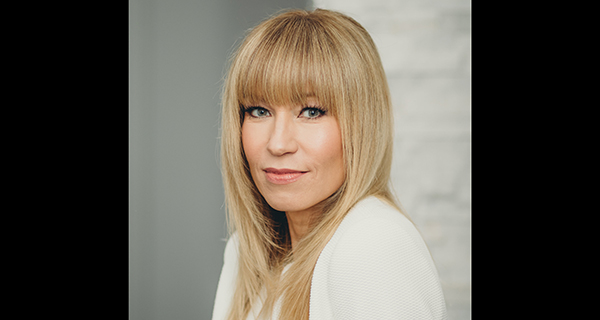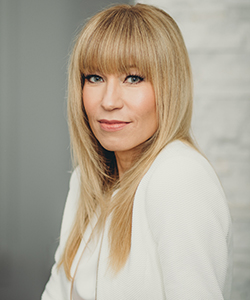Kelley Keehn is a personal finance educator and FP Canada consumer advocate.
Tell me about your background and what you do now?
Keehn: I was in the financial industry for over a decade. During that time, I found that whether you have a billion in the bank or a million in the hole, everyone has money problems. Many of my clients had issues with money, so I started studying the psychology of money (as a non-psychologist) and came out with my first book in 2005, The Prosperity Factor for Women.
That was the turning point of my career. I sold my firm and took the leap to serve in the financial industry as an educator instead of adviser.
Since then, I’ve written 10 books (the latest will be out in January 2020 published by Simon & Schuster), have conducted thousands of media interviews all over the globe, was the host of W Network’s Burn My Mortgage, served on the first National Steering Committee on Financial Literacy and today, am a regular on the Marilyn Denis Show (and have been for the past seven seasons), serve on the board of Money Mentors in Alberta, serve as an affiliate member of the Organization for Economic Co-operation and Development’s International Network on Financial Education, a committee member on the Financial Consumer Agency of Canada’s Consumer Protection Advisory Committee and a member of the Ontario Securities Commission Senior Expert Advisory Committee.
Of all my roles, I’m most proud to be the consumer advocate for FP Canada (have been for over three years – formerly known as the Financial Planning Standards Council – they certify the about 17,000 plus certified financial planners in Canada).
Why are Canadians so deeply in debt?
Keehn: The number one rule of economics is that incentives drive the market. Right now, Canadians owe nearly 180 per cent of their disposable income. That means for every dollar we bring in, we owe nearly $1.80. To give you some perspective, in the 1980s, when interest rates were in the double digits, we owed just 66 cents for every dollar of disposable income.
When money is thought of as ‘free’ or ‘cheap,’ we use debt for consumption. Renovating the kitchen, checking off the bucket list and more. Plus, it’s the norm today. We see our peers, friends and family buying new cars, new stuff and enjoying life – often on credit.
This would not be the case in the 1980s. Your friends would have thought you were nuts to take out a double-digit loan to finance your wants. I don’t think they even had lines of credit back then.
Canadians also don’t have adequate emergency savings to weather inevitable financial storms. So when something comes up in their life, they often must fall back on credit – and many times, high interest rates credit cards or even payday loans.
An FP Canada survey revealed that one in five Canadians will have to liquidate assets in order to help pay off debt this year and, one in five Canadians couldn’t last a week without going into debt if they lost their primary source of income. The Financial Consumer Agency of Canada revealed that even families with $100,000-plus in household income, 20 per cent have used a payday loan.
If a person is in deep debt, what steps should the take?
Keehn: Just like getting into better shape, there are three steps to help you start.
- First, weigh in. What’s the situation at hand? What do you owe? What are the interest rates? What’s your minimum payment? So many people don’t take a snapshot of where they are.
- Next, what do you own? What are your monthly bills? What are the costs to service your debts? Do you have an emergency account? Cash on hand or in your home?
- Next, you need to count your financial calories. Going to the gym is great, but we know what you eat is more essential to losing weight and getting healthy. Bringing in more income to help pay down your debt is also a terrific focus, but often, as we get more income, we spend more, and our expenses increase.
I encourage my readers to try my 30-Day Anti-Budget. I don’t think traditional budgets work. They’re like diets. They only work for the short term. You and your family need to track your spending for 30 days, twice a year. This is an exercise in awareness and behaviour change.
Then you decide where to trim the fat. The last step involves getting help. Someone who can help you design a plan and see your blind spots along the way. When it comes to our health, we’ll hire a personal trainer or nutritionist. But so often, we won’t reach out to a professional like a certified financial planner.
The pros will help you map out a strategy for paying down your debt, maximizing investments, tax strategies, protecting your family during high debt years and so much more. If you don’t have money to invest, there are many fee-only CFPs who charge by the hour or financial plan.
According to another FP Canada survey, nearly 40 per cent of Canadians don’t feel confident about their financial future, nearly half don’t know how much they need to save for retirement and nearly a third are overwhelmed by all the options.
If someone is looking for a planner or wanting to shop around, we have some excellent videos and articles at www.financialplanningforcanadians.ca that will teach you the questions you’ll need to empower yourself when shopping for a pro.
How bad is financial literacy in Canada?
Keehn: It’s not great. FP Canada has surveyed Canadians twice and revealed both times that money is the number one source of stress (over their health, career and relationships). While it didn’t delve into the literacy issue, anecdotally, I can attest that because Canadians don’t know what to do, it adds to driving that stress up.
The Financial Consumer Agency of Canada recently tested Canadians’ knowledge of HELOCs (home equity lines of credit) and they failed that test. We have a long way to go in improving our financial literacy.
However, that’s not the entire picture. If you broke your leg tomorrow, you don’t need a textbook on how to fix your busted limb. You need a skilled surgeon. Not enough Canadians are reaching out for help when it comes to their finances.
Another FP Canada survey found that one in three Canadians would fail the financial stress test – meaning they doubt their bank account would withstand a financial emergency such as a car repair or emergency vet bill.
What do we need to do to improve financial literacy? Is it important that we develop education programs for youth?
Keehn: We need to care and pay attention to our finances every day. There’s still so much shame and guilt about debt and one’s financial situation and lack of knowledge (people think, ‘I should know this or that’). So apathy kicks in and people often do nothing.
We used to whisper the word ‘cancer’ in the 1950s and today we involve our friends when we have a health issue and run for the cure. We used to take a doctor’s prescription and leave it at that. Today, we’re partners in our health and research what our doctor prescribes.
We need to get involved in our financial health as much as we do our physical health. You need a pro and to participate actively.
For our youth, many positive advances have been taking place. One initiative, Talk to Our Kids About Money Day, has 8,000 teachers on board across the country. They’re educating our youth on financial literacy issues and aim to make talking about money fun.
But there’s much work to be done.
– Mario Toneguzzi
The views, opinions and positions expressed by columnists and contributors are the author’s alone. They do not inherently or expressly reflect the views, opinions and/or positions of our publication.


